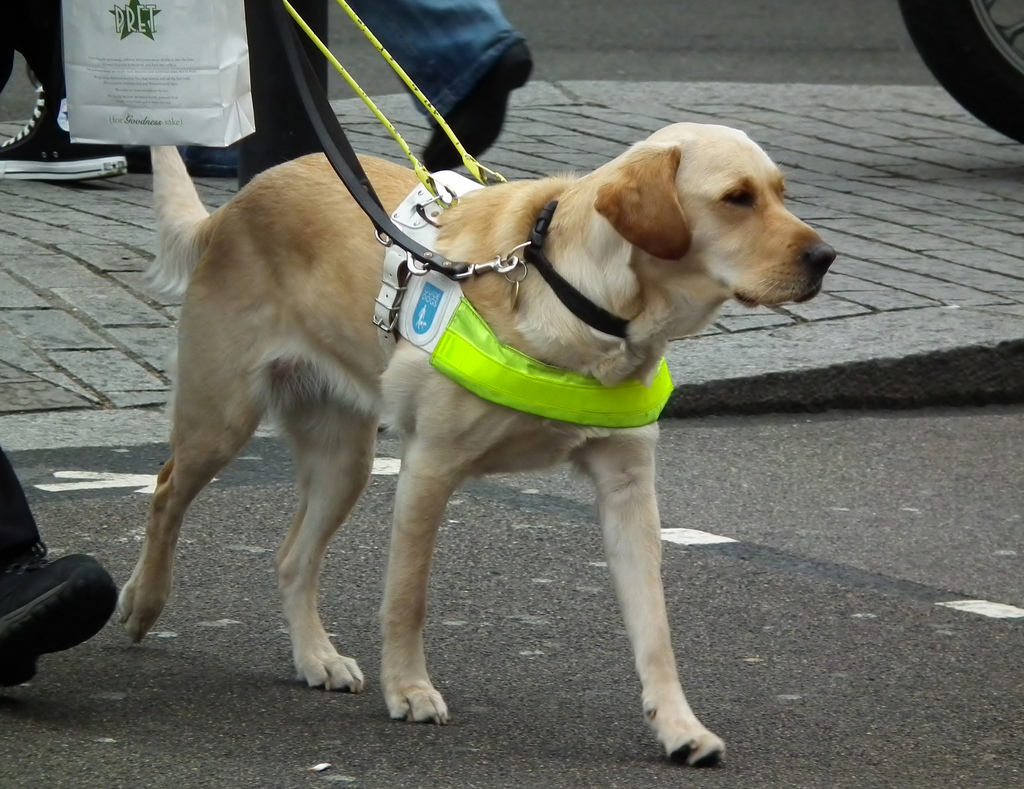
Jackie: This week is Guide Dogs week, so for this week's podcastsinenglish.com we're talking about guide dogs for the blind.
Richard: Yes, the Guide Dogs Organisation trains dogs um... to help blind people. It's been going a long time, hasn't it Jackie?
Jackie: Yes, it started back in 1931 when two women trained four dogs.
Richard: So four dogs then, how many guide dogs do they have today?
Jackie: The organisation now is responsible for about 8,000 dogs.
Richard: So how are they trained?
Jackie: Well, there's three main stages to the training, Richard. The first stage is when they are very, very little, when they're puppies. There they're just made to play with each other and play with other people.
Richard: Right, and what's stage two?
Jackie: Well, at about six weeks old until they're a year old...
Richard: Six weeks, that's young.
Jackie: ...all they do is they walk around. They have puppy walking volunteers and they take the dogs everywhere: on public transport, in the city centre, in the countryside, so that the dogs are used to all the kind of things they will face in the future.
Richard: Right, okay and stage three?
Jackie: That's probably the most important part. For 26 weeks they go to a training school.
Richard: And then they learn to do these other specialised tasks.
Jackie: Yes. Six months intensive training and they know how to deal with all the situations that might occur.
Richard: Great, so all this training and then how long do they stay with their owners?
Jackie: They're introduced to a possible person, together they have three weeks training.
Richard: Right
Jackie: And then if that works and the dog and the person are happy together they stay together for about six to seven years.
Richard: Right, okay. And this all sounds expensive.
Jackie: It is expensive, you're right Richard. 50,000 pounds is the lifetime cost.
Richard: 50,000 pounds per dog basically.
Jackie: Per dog, per dog.
Richard: Wow
Jackie: Yes
Richard: And... and who pays for this? Where does... Where does the money come from?
Jackie: All the money comes entirely from the public.
Richard: Wow. Fantastic, and we haven't asked: what type of dogs do they mainly use for these?
Jackie: 87% of the dogs are either Labradors...
Richard: [laughs) Labradors, like ours.
Jackie: Yes ...Golden Retrievers, or a mix of both of them.
Richard: Because they're the easiest to train, is that right?
Jackie: I think so, yes, yes.
Richard: And they do make a difference, don't they?
Jackie: They certainly do. These dogs they give a new life to people who can't see very well. It's fantastic.
Richard: And good for the dogs as well, I'm sure.
Jackie: They get lots of walking [laughs]